A 27-hour trek to the space station
From CNN Business’ Jackie Wattles
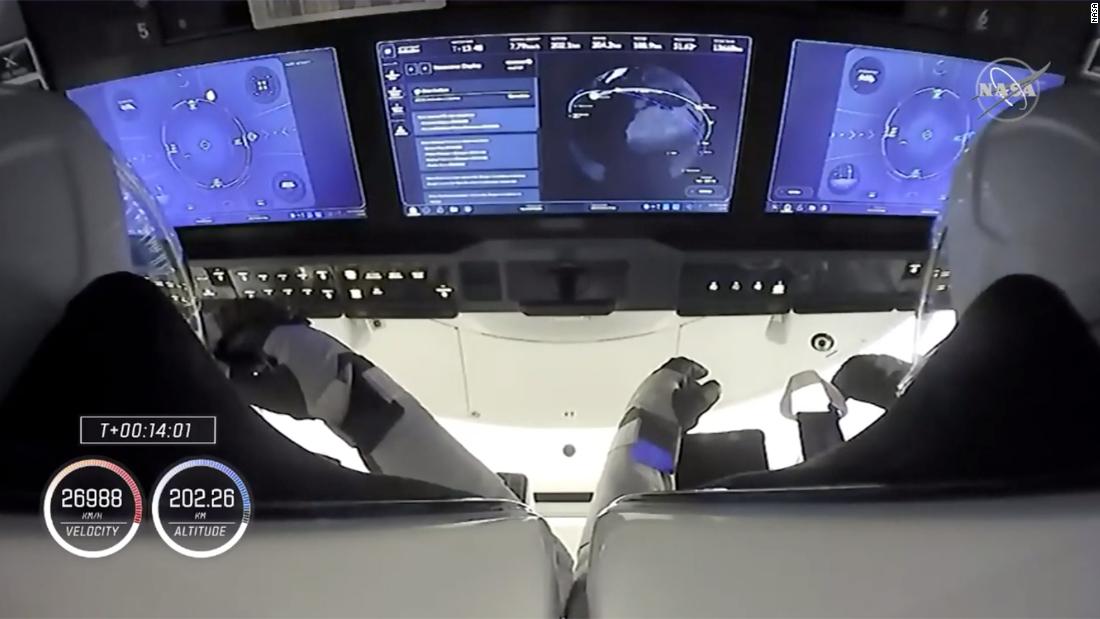
After liftoff, it will take 27 hours for the Crew Dragon spacecraft to maneuver its way to the International Space Station before docking around 11 pm ET tomorrow.
It’s possible to make the trip in far less time, but it depends on the day: If the crew was able to launch yesterday, they could have made the trek in around eight and a half hours.
Why the big time difference? The timing of today’s takeoff and the ISS’s position in orbit means this trip will have to take longer than nine hours. And when that happens, NASA makes sure to extend the trip to allow the crew enough time to catch some sleep on board the spacecraft. That’s to ensure they’re fully alert when it comes time to dock with the space station.
And yes, the Crew Dragon capsule has a bathroom on board.
Crew Dragon is free
From CNN Business’ Jackie Wattles
The Crew Dragon capsule, carrying four astronauts, is now flying free through Earth’s orbit. The capsule uses tiny thrusters to stay oriented and help steer the spacecraft toward the International Space Station.
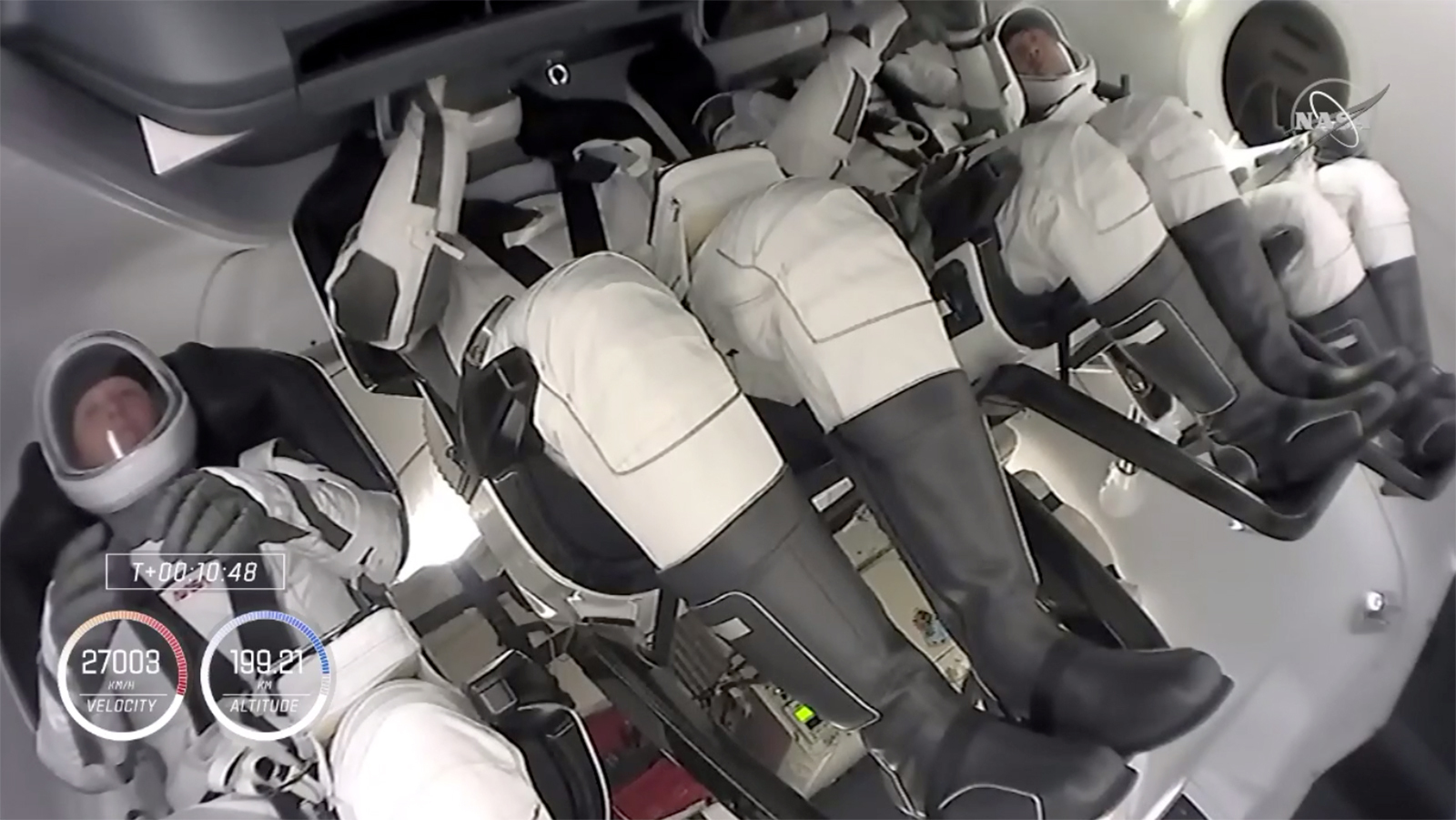
It’s a slow and precise journey that will take 27 hours. The capsule is expected to dock with the International Space Station tomorrow around 11 pm ET.
SpaceX rocket booster lands on droneship
From CNN Business’ Jackie Wattles
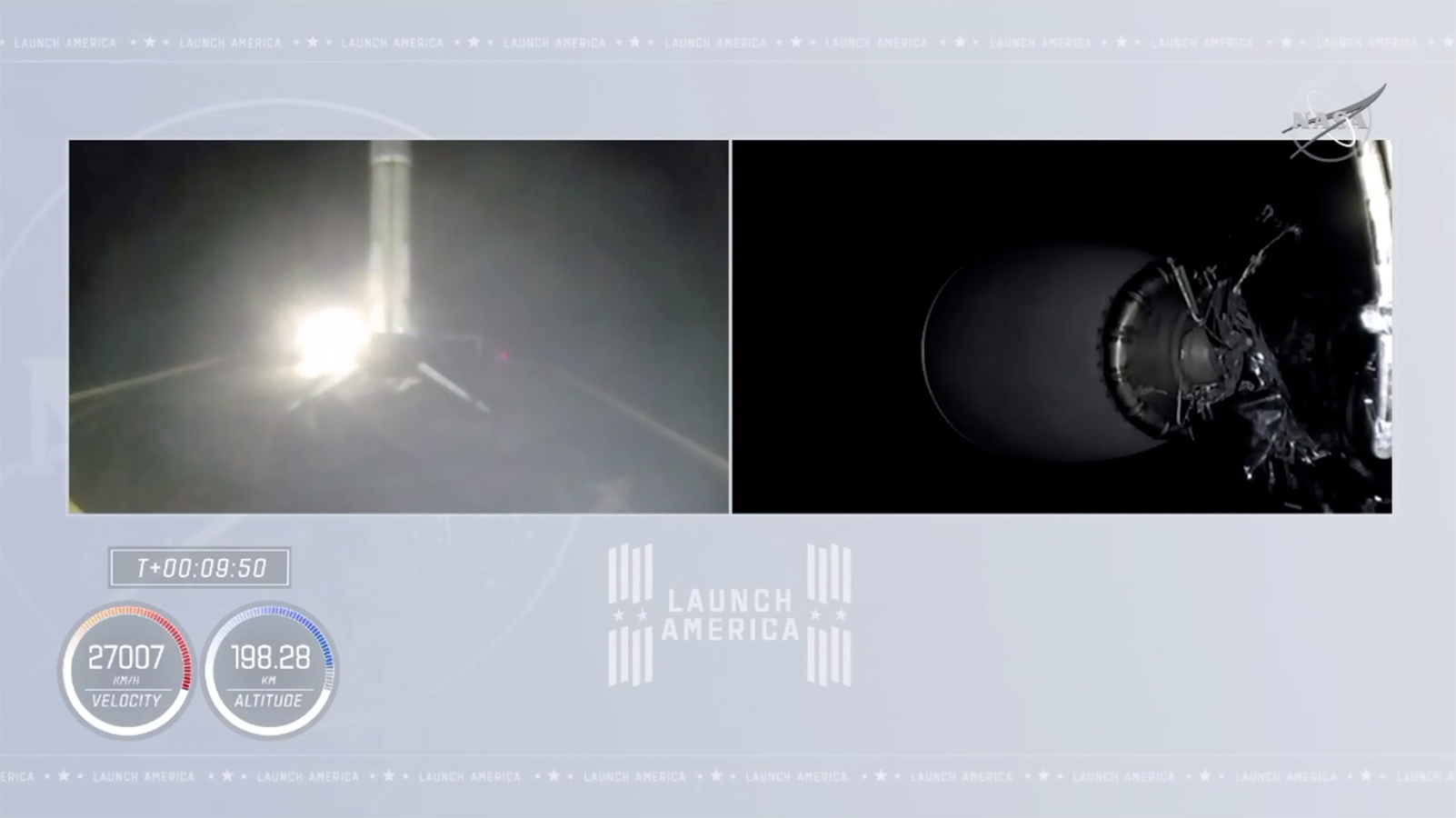
The first-stage of SpaceX’s Falcon 9 rocket, the largest part of the launch vehicle that houses the nine main engines, detached from the second stage of the rocket and made a pinpoint landing on a robotically-controlled seafaring platform, or droneship, in the Atlantic Ocean.
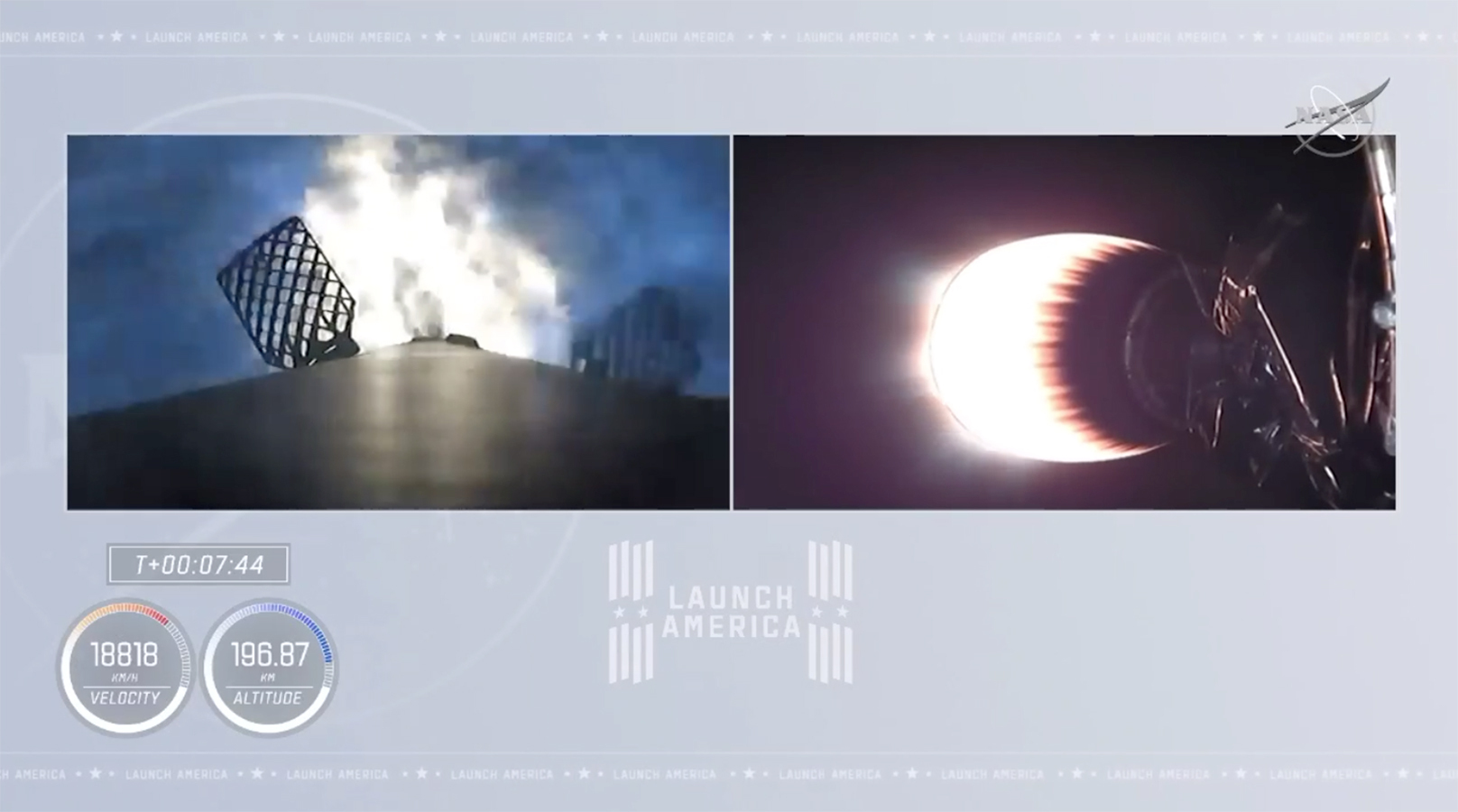
This is a routine feat for SpaceX. The company has recovered more than 60 of its first-stage rocket boosters after launch, allowing the company to refurbish the booster and use it again.
That saves the company some cash, SpaceX says.
The second stage of the rocket has now fired up its engine, and it’s working to propel the Crew Dragon capsule — carrying the four astronauts — to more than 17,000 miles per hour. That’s the speed needed to keep an object in a stable orbit around the Earth.
The first stage has separated
From CNN Business’ Jackie Wattles
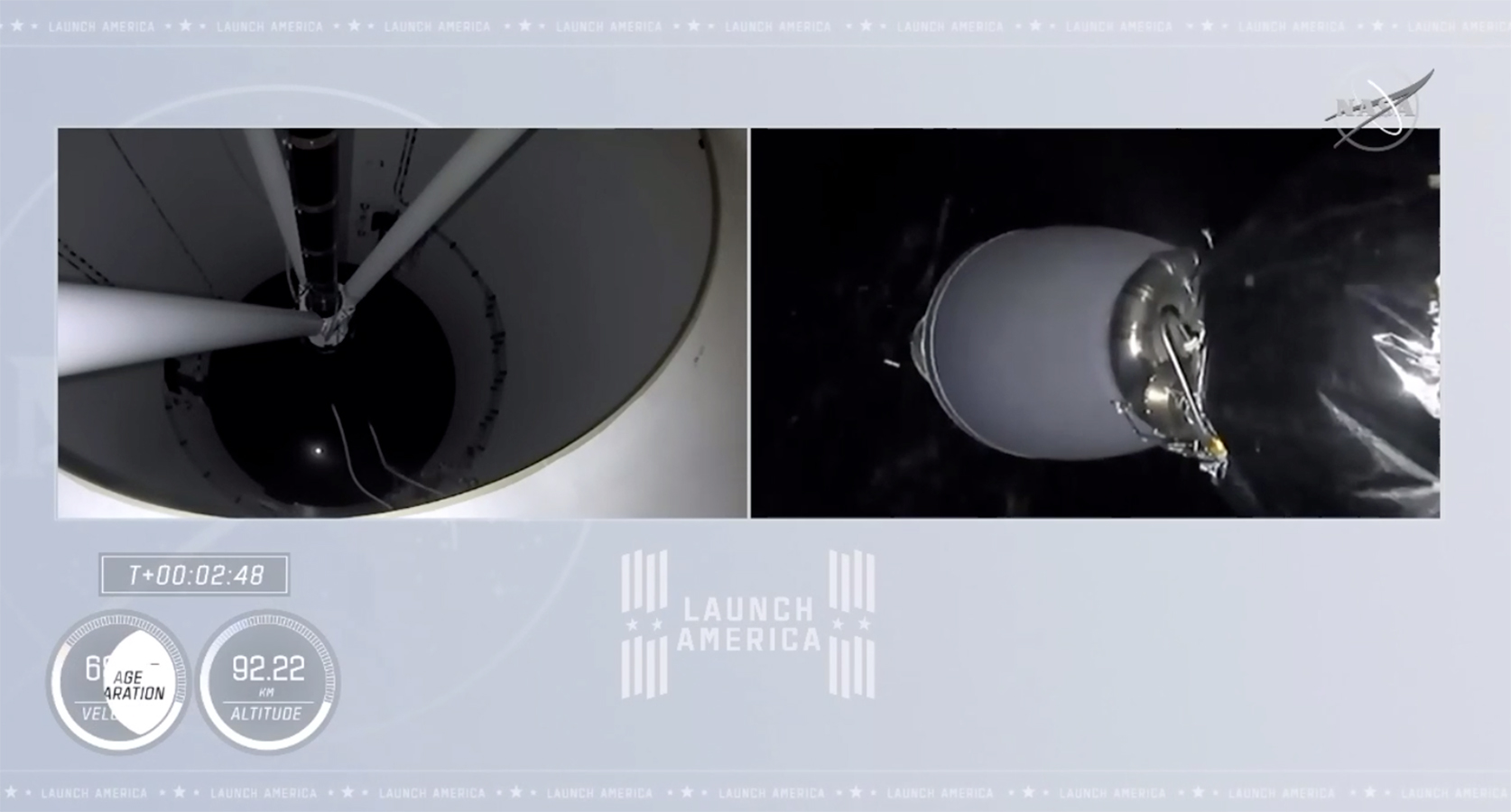
The rocket just hit “MECO” – or main engine cutoff. That means the 9 Merlin engines attached to the rocket’s first-stage, the ones that give the initial thrust at liftoff, are done burning fuel for now.
The first-stage of the rocket then broke off from the second-stage rocket, which has its own massive engine optimized for blasting through space where the atmosphere is super thin.
The second-stage lit its engine, and it’s now powering the Crew Dragon capsule to higher and higher speed.
It’ll need to hit at least 17,000 miles per hour to reach “orbital velocity.” That essentially means the spacecraft will be traveling so fast, at just the right angle, that it’ll begin to continuously fall around the earth — otherwise known as orbiting.
Rocket hits key milestone: Max-Q
From CNN Business’ Jackie Wattles
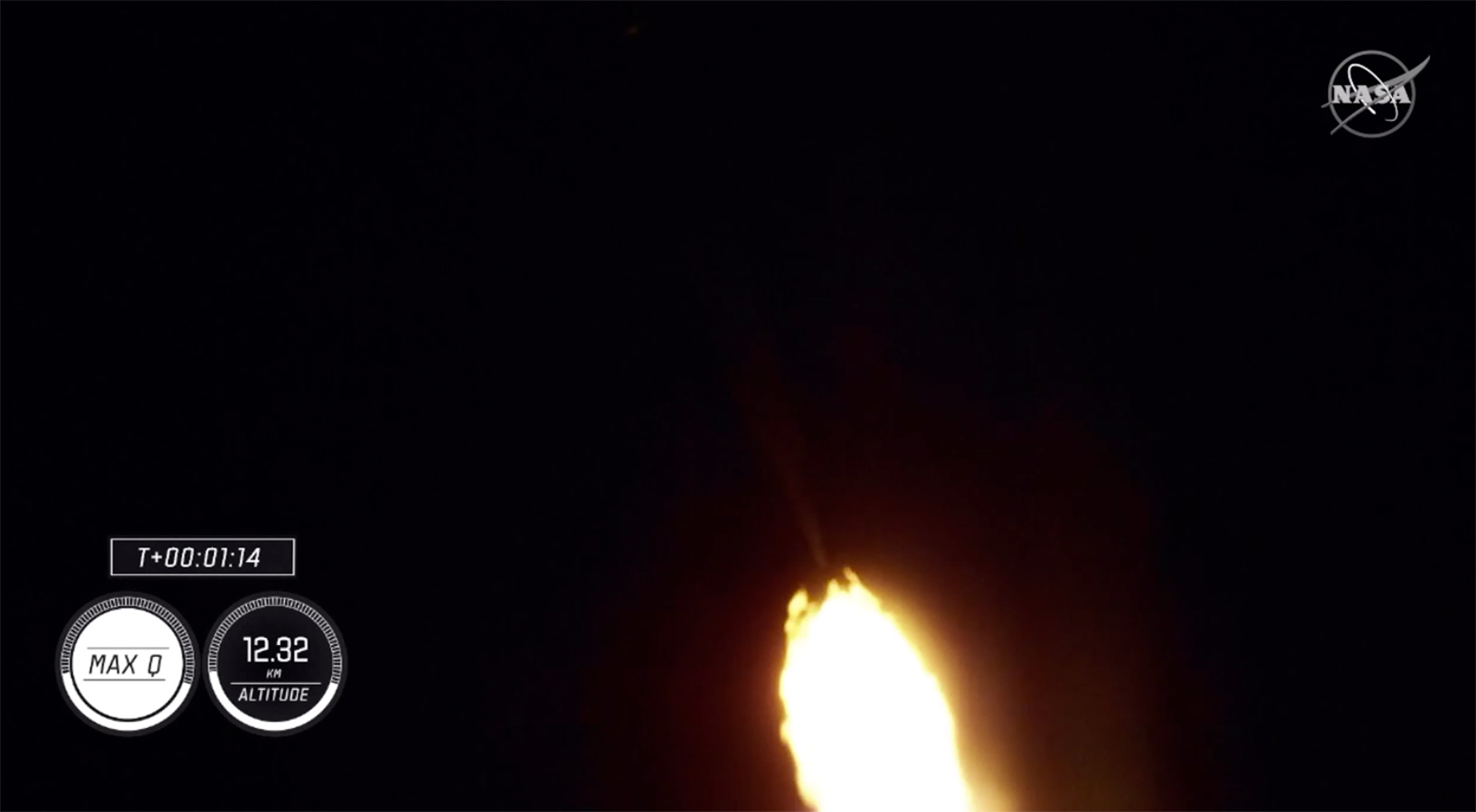
The SpaceX Falcon 9 rocket just hit “Max-Q.” That’s the engineering term for when a launch vehicle reaches the highest aerodynamic pressure — and everything still appears to be going flawlessly.
LIFTOFF! Four astronauts headed to space aboard SpaceX rocket
From CNN Business’ Jackie Wattles

The SpaceX 9 rocket fired up the nine engines at its base, and the rocket is now soaring toward outer space.
There are four astronauts on board —NASA’s Michael Hopkins, Victor Glover, and Shannon Walker and Soichi Noguchi with Japan’s JAXA space agency — and they’re headed for a six-month stay on the International Space Station.
Watch the moment:
A message of unity
The Crew Dragon is named “Resilience” in honor of the stressful time the world is enduring.
Astronaut Mike Hopkins continued that message, saying this to Mission Control just minutes before takeoff:
By working together on these difficult times, you’ve inspired the nation and the world…. Now it’s time for us to do our part. Crew-1 for all.
Watch the moment:
T-1 minute: Computers are prepared for automatic abort
From CNN Business’ Jackie Wattles
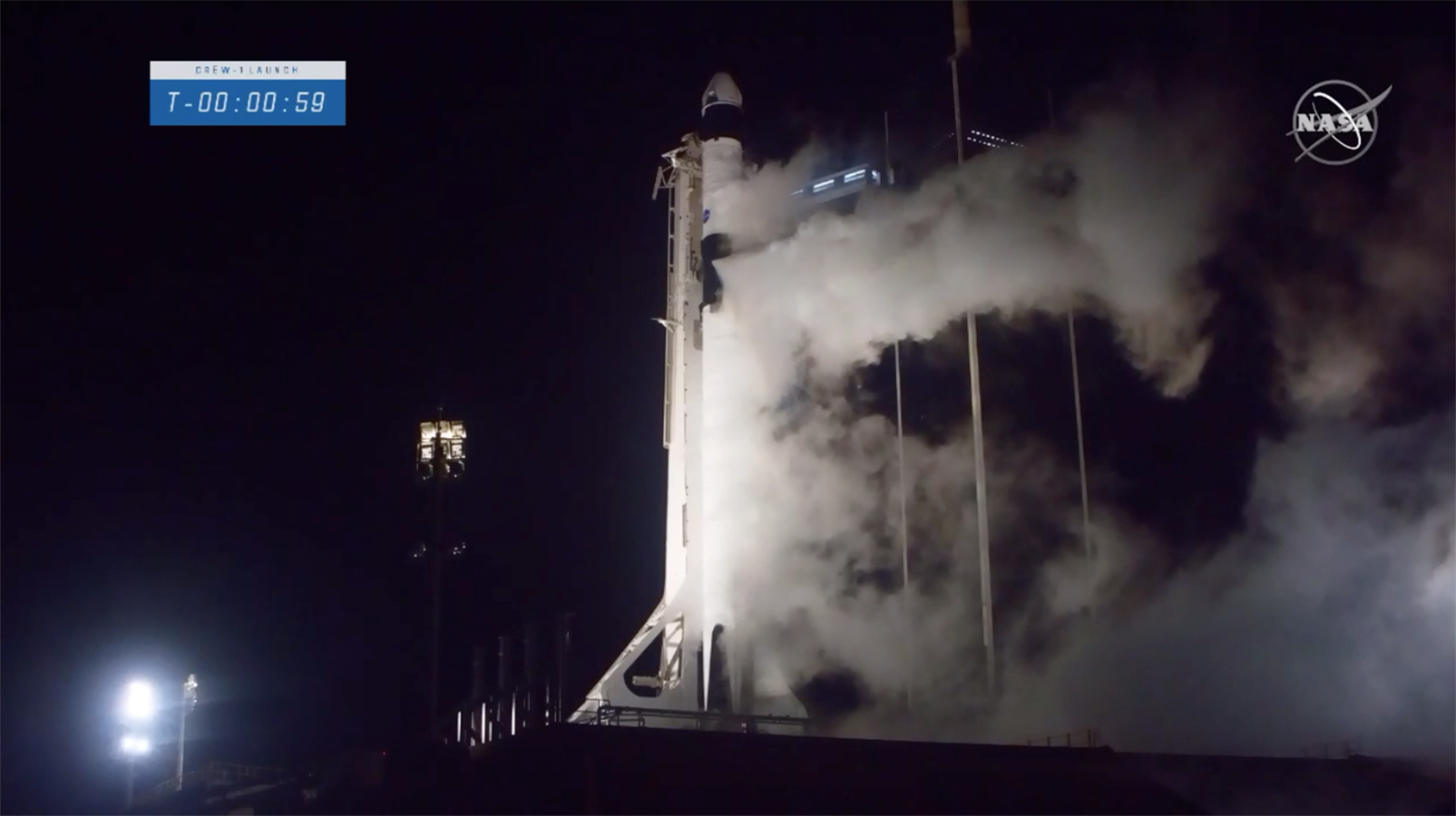
Shortly before liftoff, launch controllers hand over some control to computers that can trigger an automatic abort if they detect anything abnormal about the SpaceX rocket or spacecraft.
Computers have halted SpaceX missions before: Just last month, an issue with a couple of the rocket’s engines was detected by the automated system, freezing the countdown clock with just two seconds to go.
Fueling has begun
From CNN Business’ Jackie Wattles
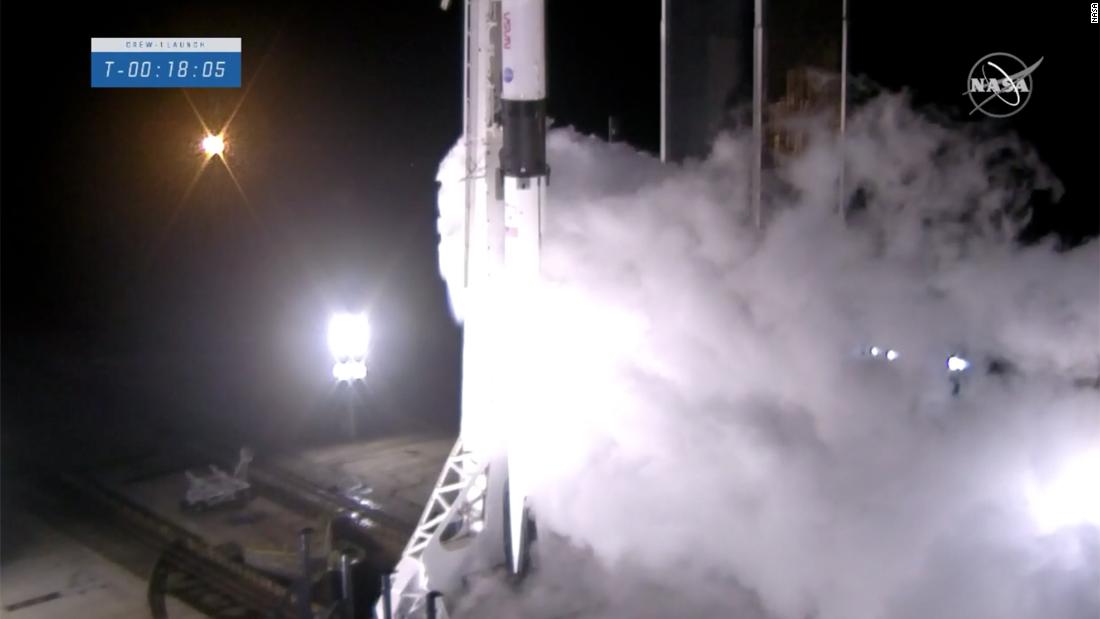
All of the initial hardware and communications checks are done, the astronauts are strapped into their seats, and launch officials have given the go-ahead to start loading the Falcon 9 rocket up with fuel.
The propellants used are RP-1, or “Rocket Propellant 1,” and “LOX” — or “liquid oxygen.”
The oxygen is made so cold that it turns liquid, and after LOX loading, viewers will be able to see what looks like steam or smoke emanating from the rocket. That’s just the super-chilled oxygen boiling off the side of the rocket as the surrounding air heats some of the excess LOX.
More than 1 million pounds of propellant will be funneled into the Falcon 9 over the next half hour. Meanwhile, the astronauts are still sitting tight inside the Crew Dragon capsule, which sits atop the rocket.
CNN’s Rachel Crane has more:
